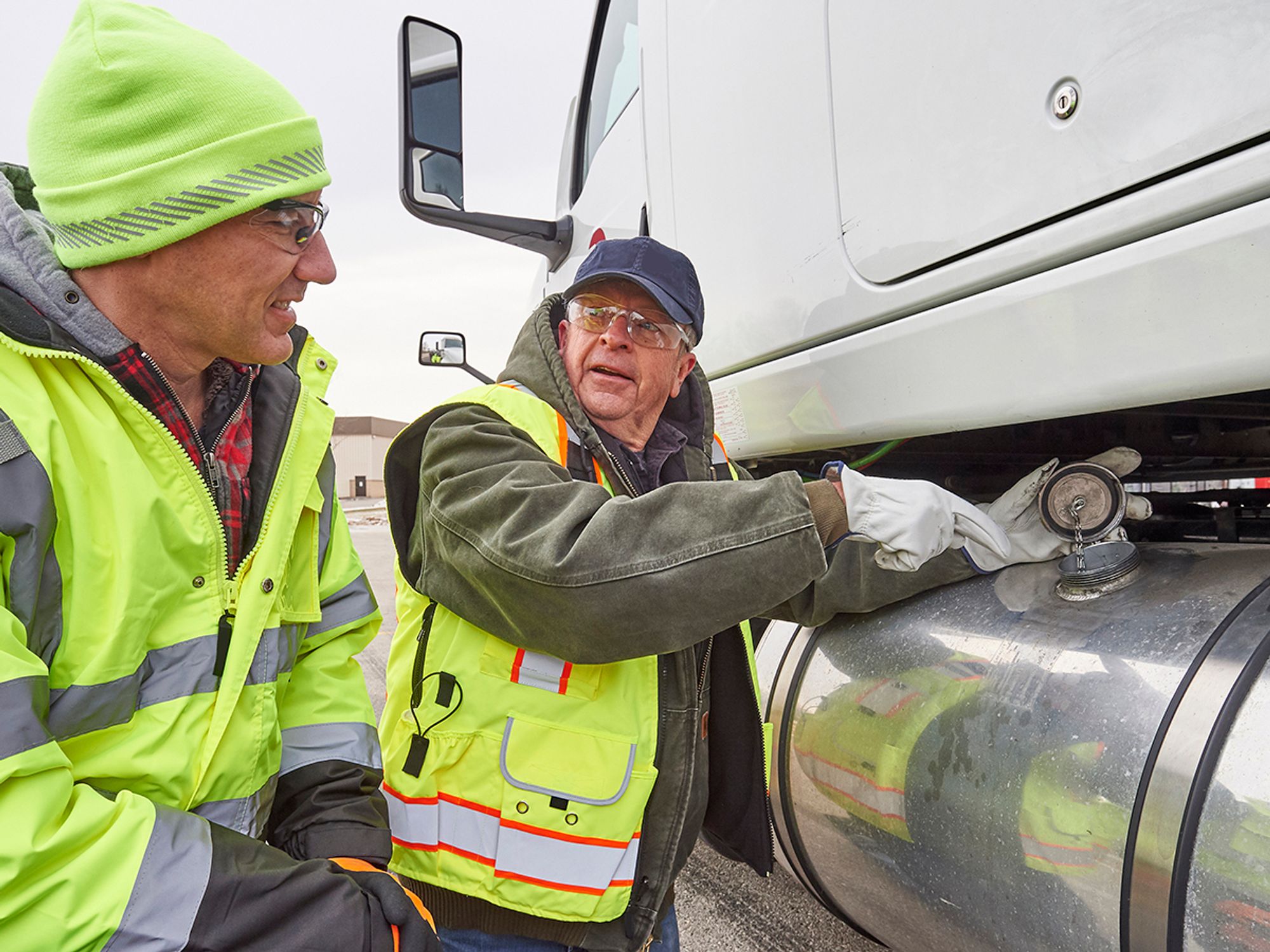Fuel systems

- While there are certain rules common to all types of fuel systems, liquid fuel tanks, CNG fuel containers, and LPG systems all have specific requirements over and above the general fuel system rules.
- The rules applicable to all fuel systems include the installation and location of the fuel tank, a prohibition against gravity or syphon feeds, the location of selection control valves, fuel lines, and excess flow valves.
- If switching to an alternate fuel vehicle, carriers must make sure that technicians and drivers receive training on safely fueling the new vehicles and how to handle any fuel-related incidents, such as a safety/pressure relief valve opening and when (and how) to operate the emergency fuel shut-offs.
The regulations for all types of fuel systems, including liquid fuel tanks, compressed natural gas (CNG) fuel containers, and liquefied petroleum gas systems are found in Part 393, Subpart E.
All fuel systems
The common requirements applicable to all fuel systems include:
- Location of the fuel tank
- Fuel tank installation
- Prohibition against gravity or syphon feeds
- Location of selection control valves
- Fuel lines
- Excess flow valves (393.65)
Liquid fuel tanks
The rules for liquid fuel tanks apply to tanks containing or supplying fuel for the operation of commercial motor vehicles (CMVs) or for the operation of auxiliary equipment installed on, or used in connection with CMVs. The rules set forth the requirements for the construction of liquid fuel tanks, performance tests for liquid fuel tanks and side-mounted liquid fuel tanks, and manufacturer certifications and markings. (393.67)
CNG fuel containers
Fuel containers used to supply CNG for the operation of CMVs or for the operation of auxiliary equipment installed on or used in connection with CMVs must comply with 393.68.
Specifically, any motor vehicle manufactured on or after March 26, 1995, and equipped with a CNG fuel tank must meet the CNG container requirements of Federal Motor Vehicle Safety Standard (FMVSS) No. 304 (571.304) in effect at the time of manufacture of the vehicle.
In addition, each CNG fuel container must be permanently labeled in accordance with the requirements of FMVSS No. 304, S7.4, which mandates affixation of a decal informing the vehicle owner and operator of the 36,000 mile or annual (whichever comes first) tank inspection requirement.
Liquefied petroleum gas systems
Motor vehicles, or auxiliary equipment installed on, or used in connection with, a motor vehicle that uses liquefied petroleum gas (LPG) as a fuel must conform to certain Editions or Divisions of the “Standards for the Storage and Handling of Liquefied Petroleum Gases” of the National Fire Protection Association, Battery March Park, Quincy, MA 02269, based on the date of installment of the system. An LPG fuel system subject to a specific Edition of the standards may also conform to the applicable provisions in a later Edition of the standards. The tank of a LPG fuel system must be marked to indicate that the system conforms to the standards. (393.69)
Alternate fuel considerations
If a carrier is considering switching to an alternate fuel vehicle, there are several considerations:
- First, it will need to get at least some of its technicians trained to inspect and maintain the fuel system. Some original equipment manufacturers (OEMs) and parts suppliers provide the training.
- Second, it will need to begin stocking parts for the systems.
- Third, if it is a gaseous fuel (such as CNG or LNG), it will need to make modifications to its facilities to prevent the collection of flammable gases and the accidental ignition of gases (in case of a leak in the building).
- Finally, it will need to establish a preventive maintenance inspection schedule for the fuel system.
Discussing the specifications and maintenance requirements with the system provider (OEM or parts supplier) can provide insight into the inspection and parts requirements. Also, do not forget that the technicians (and drivers!) will need to be trained on safely fueling these vehicles and how to handle any fuel-related incidents, such as a safety/pressure relief valve opening and when (and how) to operate the emergency fuel shut-offs.
